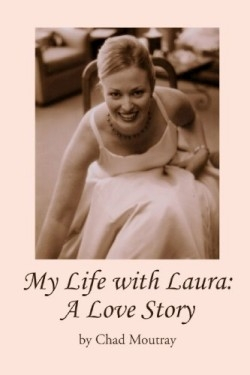My Life With Laura
A Love Story
Cancer kills hundreds of thousands of people in the U.S. every year and every death is a tragedy. If tragedy is quantifiable Laura Moutray’s death might be considered one of the worst; she was only thirty-six when she succumbed to cancer after a year and a half of intensive treatment and she left behind a two-year-old daughter who will never really know her mother.
Partly to work through his own feelings of grief and partly to ensure that their daughter Charlotte would understand as much as she could about her mother Chad Moutray wrote a memoir about his time with his wife. He begins with their first contact through an online dating service and follows their courtship marriage pregnancy Charlotte’s birth their fight with cancer and eventually Laura’s death and the few sad months that follow. They had only about five years together.
Moutray an economist is an intelligent and skillful writer. His greatest strength is the emotional honesty he displays while writing about his wife’s demise. Amateur memoirists often fall into the trap of painting an overly golden portrait but Moutray finds a balance between the deep sadness he experienced watching his wife die and the grace he and Laura held to tightly through their Christian faith. Neighbors friends family and church members brought meals drove Charlotte to preschool and provided constant support. But Moutray does not pretend this was enough to make life easy: “I tried to be the perfect husband—someone who was always there for Laura when she needed me. It really upset me when she told me that she felt she was battling her cancer on her own.”
The book does fall victim to a few bad habits: Moutray includes every detail about his life with Laura down to the names of their many favorite restaurants the stores where they purchased party supplies and a myriad of details about time-share ownership. Charlotte and Laura’s other friends and family members might appreciate this gift of extreme thoroughness but a general readership would be better served by a more streamlined narrative. These details are distractions from the main thrust of the book—Laura’s love of life and her fight with cancer.
Another potential problem for readers is Moutray’s tone which is always formal and occasionally patronizing. For instance about their engagement he writes “Laura enjoyed this opportunity to have a little ‘girl talk’ which to Laura (and I suspect many women) included diamond jewelry.” Perhaps Laura did like to chat about her new diamond engagement ring but describing this as “girl talk” puts a diminutive spin on the scene.
Despite a few shortcomings readers especially those of Christian faith will find themselves moved by this book. There is much to learn here about how to love how to care for one another and how to release those we love into whatever comes after.
Reviewed by
Andi Diehn
Disclosure: This article is not an endorsement, but a review. The publisher of this book provided free copies of the book and paid a small fee to have their book reviewed by a professional reviewer. Foreword Reviews and Clarion Reviews make no guarantee that the publisher will receive a positive review. Foreword Magazine, Inc. is disclosing this in accordance with the Federal Trade Commission’s 16 CFR, Part 255.

